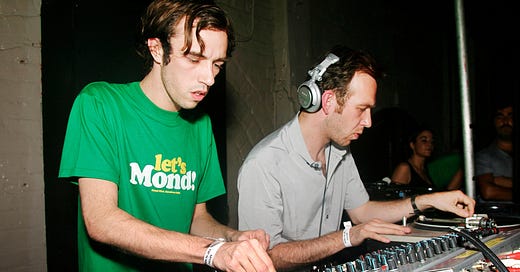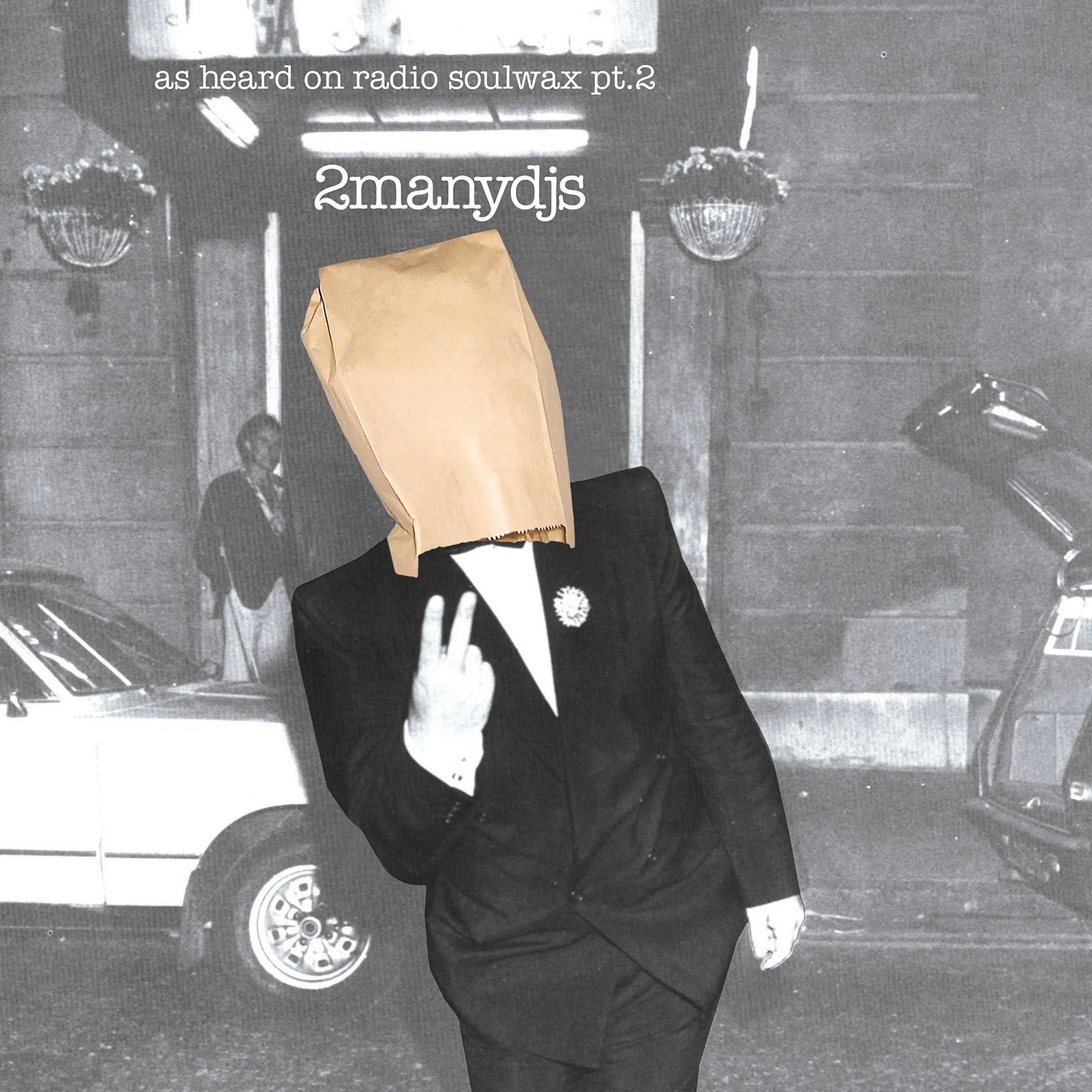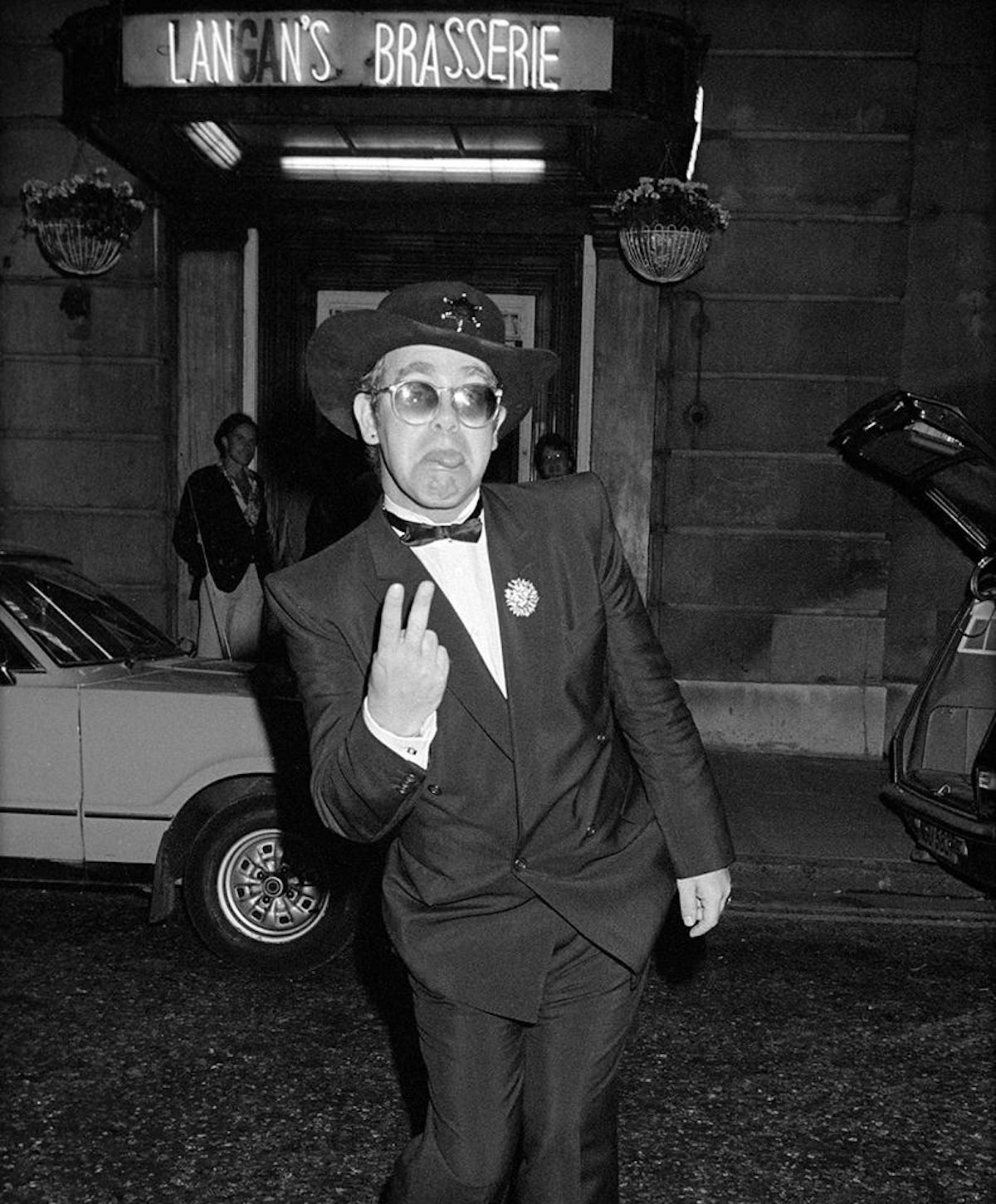David and Stephen Dewaele play a pretty sizeable role in After Daft. I’ve been lucky to bank three sessions with the affable brothers across 2022, including a full day at Studio Deewee in Ghent this February, as well as speaking to dozens of artists who intersect the 2manydjs / Soulwax arc.
Rather than pepper you with period-specific quotes from Peaches, Nancy Whang, Vitalic et al, or take you down one of the other 500 adjacent wormholes, I’m going to write a little about As Heard on Radio Soulwax Pt.2 instead.
I got asked to refresh their biography this summer ahead of AHORS’ reissue, which was great, because not only are the Dewaeles relevant to various chapters within my story, they are also absolute quote machines on just about any subject. Their memories are surprisingly unharmed for a duo who once got shunted to post-watershed rotation for a spangled video that was essentially Sesame Street Does Fabric.
Banger, btw
AHORS [2002] was meant to be up on streaming services by now, hence the glut of recent 20th anniversary retrospectives, as well as a postponed London party with Erol Alkan, Miss Kittin and more (what would have been my first time watching the brothers in SW9 since Soulwaxmas 2009, fact fans). The record’s upload has been stalled by a few samples that are trickier to clear in the age of DSPs than they were in the blog era, but the confetti parade is marching ahead anyway.
Given its bulletproof designation as a Historically Important Mix, it’s a fun exercise to try and reassess AHORS neutrally. To no-one’s surprise, the hour-long set still rocks. While there isn’t a single flub, per se, if you’re going by the completely arbitrary barometer of ‘would anyone born after 1997 recognise this artist?’, some inclusions did oxidise pretty quickly.
Skee-Lo, whose cultural footprint has been more or less relegated to hip-hop throwback brunches, surprisingly receives the most airtime; “I Wish” is punched in and out on three separate occasions. Although ADULT.’s momentum sagged after 2002/3, during the ten-day sprint of making AHORS, the Detroit duo’s inclusion was of such importance that the Dewaeles restitched “Hand To Phone” to approximate Carl Craig’s remix, just so they could bypass his flat ‘no’ when it came to licensing.
(After AHORS caused a splash, Phoenix, Daft Punk and others reached out and apologised for whichever stooge they could blame about declining permission. David and Stephen, meanwhile, chuckle that they’ve still never managed to bring up the snub with Carl.)
If you were being a killjoy, you could argue that the sheer volume of British DJs, tastemakers, industry types and journalists who posted up at Trash in the early ’00s — as well as impressionable future writers who read the glowing praise and never attempted to strong-arm the canon in a different direction (hello) — led to a slight overinflation of AHORS’ influence.
It’s very good! Yet it’s not the be-all and end-all of creative, thrilling mixes from the early 21st century which tore at the straitjacket of genre. DJ /rupture’s Gold Teeth Thief [2001] takes a bombastic approach, flooring it to 180bpm almost immediately, but also manages to get Missy Elliott, Paul Simon, Spragga Benz, Project Pat and Muslimgauze under the hood at a time when vanishingly few others were doing that.
For Europeans, though, 2manydjs had the benefit of being proto-poptimism you could reach out and touch, which is why they stuck as the masthead of a movement.
One of AHORS’ great strengths comes from its unrestrained rush into the arms of pleasure. The Dewaeles elide any tantric deejay-edging for a pump-action approach, dinging out Basement Jaxx, Sly & The Family Stone, Peaches, the Velvets, Felix Da Housecat and not one but two Iggy Pop tunes within the opening 12-or-so minutes.
That dynamite Stooges/Salt-N-Pepa blend now seems to presage a remarkable number of chant-a-long, snot ‘n grot rock revivalists who made up the flabby middle of countless indie festivals in the ’00s. (Word to The Donnas and Do Me Bad Things.)
The received wisdom has always been that Dave, Steph and Erol were the Three Musketeers of rock-meets-pop-meets-rave. When we spoke for AD, Pedro Winter compared their renegade spirit to the Beastie Boys, and the mix bears that out. I’d wager you remember Dolly vs Röyksopp or the pre-Electric Six inclusion of “Danger! High Voltage” more than you do Soul Grabber’s “Motocross Madness,” a filtered techno jam which chimes with the sound of contemporary dancefloors in ways 90% of the set no longer does. Right?
When reflecting upon AHORS’ ripple effects, though, something David mentioned stood as an overlooked detail of 2manymania. While the step to becoming indie’s favourite DJs was modest — and to some degree baked-in given their existing inroads into NME-Land through early Soulwax albums — the smooth transition to becoming commercial club music’s accepted oddballs caught them off guard.
“We were accustomed to Reading & Leeds-type festivals,” he told me, “but big institutions of dance music like Creamfields and Global Gathering opened their arms to us much wider than we’d anticipated. The norm was Roger Sanchez, yet we played The Cramps; it was what we were rebelling against, and almost making fun of.”
This inadvertent Trojan Horsing got stronger when mainstream America had its grand electronic awakening after Daft Punk’s Alive 2006-07 tour. Alongside your Alkans and Annie Macs, 2manydjs were long a go-to option for megawatts dance festivals in the States, a curious trend that only truly quietened down after EDM’s formalisation as a mass movement and profitable commercial entity.
Needless to say, there are some great anecdotes from that chalk ‘n cheese period when these polite walking encyclopaedias from the lowlands were lumped together with low-bitrate crunk jocks in purple hoodies.
Because while the Dewaeles rode their notoriety as genre-agnostic party-starters around the world numerous times, they were prescient enough to shake loose the ‘mash-up’ tag many years before the trend whipped through the US via Piracy Funds Terrorism, the Hollerboard era and frat-friendly blog fare by acts like The Hood Internet and Super Mash Bros.
Girl Talk’s Night Ripper [2006] and Feed The Animals [2008] were twin jewels in the American mash-up crown — both stacked, hypertechnical and arguably more impressive than AHORS. He blazed high and fast across dance music’s sky but doesn’t get remotely as much love as the Dewaeles do these days, despite being popular enough to sub-headline the main stage at Coachella before OutKast’s 2014 comeback.
For those who greeted AHORS like manna from heaven, Girl Talk was regarded as more of a punctuation point to an era, rather than upholder of the sacred flame.
(I’ll keep the source anonymous for now, but XXXXXXXXXXXX huffed to me during a book chat this summer: “I don’t know what Girl Talk has been up to lately. He was of a moment that is likely to be lost in time. Is he doing stuff today?” For what it’s worth, his recent LP Full Court Press is genuinely good fun if you loved those early 2010s Curren$y mixtapes.)
Interestingly, some of the most ingenious combinations of the Dewaeles’ early run — think “Magnificent Romeo,” Kylie-as-Kyuss or the delightfully-titled “Smells Like Booty” — are nowhere to be found on AHORS.
You can get your fill on the Christmas Day 2001 Radio 1 special, which was surreptitiously packaged by bootleggers as As Heard on Radio Soulwax Pt.1 in a series that ran to what Stephen estimates as 18 or 19 fake editions. But when it comes to the official Pt.2, they kept it tighter.
Today, the guys breathe a sigh of relief that their banner statement contained less prefab blends than they could have crowbarred in, and that a few jerky tempo leaps sets it apart from over-Ableton’d bedroom mixes which became the norm by 2007 and had utterly jumped the shark only a few years thereafter.
Even while juggling Despacio residencies, solid gold Charlotte Adigéry & Bolis Pupul LPs, soundtracks and everything else which flows out of Ghent, that timeworn 2manydjs tee still fits better than expected each time they throw it on.
Inside the mainframe at DEEWEE HQ
As Heard On Radio Soulwax Pt.2’s excitable imprecision, oblong structure and nerdish curveballs essentially put clear blue water between the Dewaeles and countless imitators. That’s where the permanence lies, and why the record is such a gas to revisit after 20 years. Even through overfamiliarity, just try and tell me you don’t grin like an idiot when the breathy acapella for “Oh Sheila” folds into the mix early doors — you can’t!
Thanks Dave and Steph for being part of the book, thanks for having me on side for AHORS 20, and thanks for not filing a cease-and-desist when you briefly caught HMT at Horst Festival this May (sorry about that).
And for those at Brixton for the big celebrations on Saturday: I will see you there.
Jinxed it. ¯\_(ツ)_/¯
Did you enjoy this newsletter? If so, consider passing it along to a friend, or pre-ordering a copy of After Daft — a forthcoming book on the last 30 years of dance, electronic, pop and DJ culture — via Amazon or Waterstones today.
That’s where all the really good stories will go.







